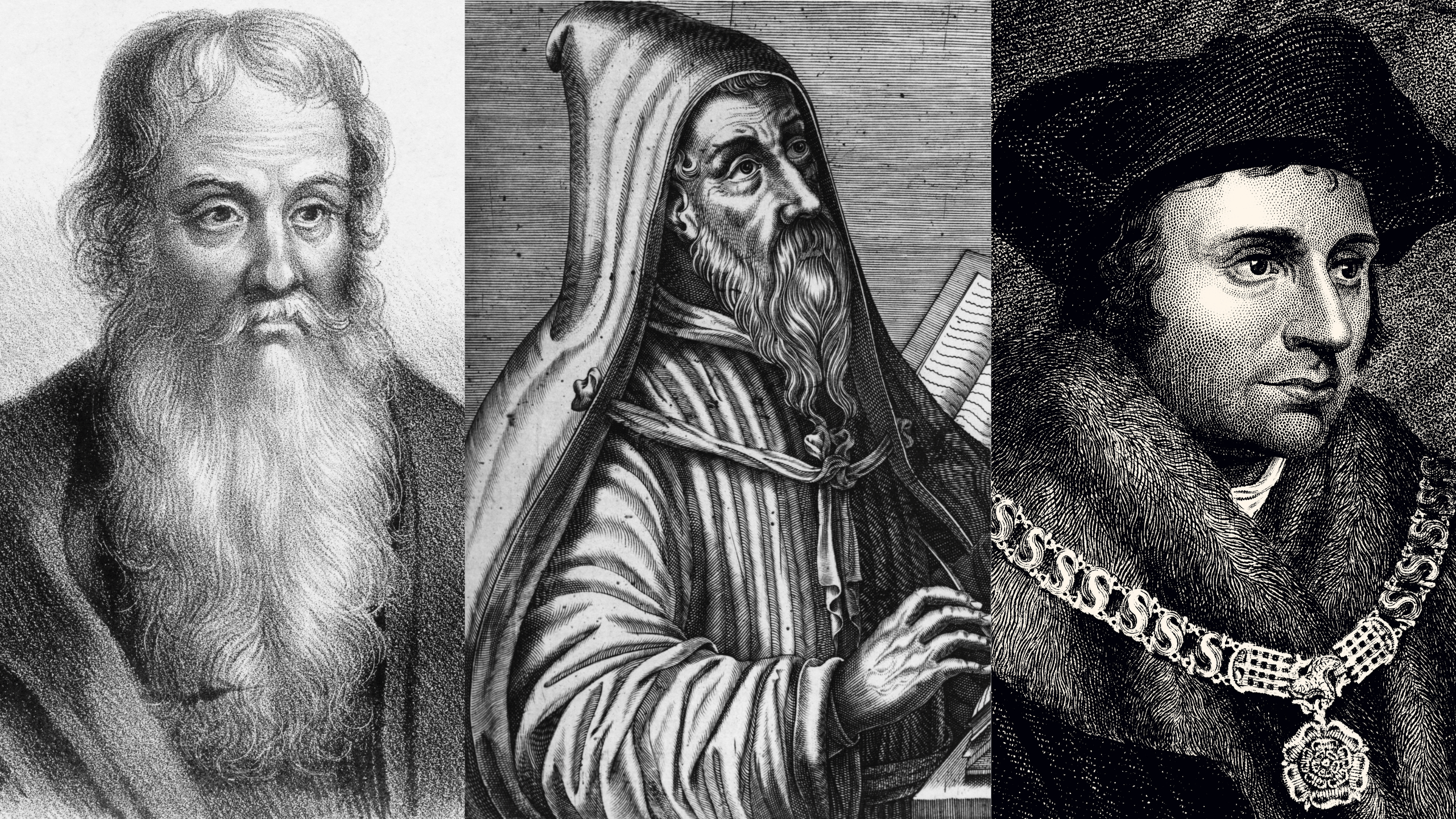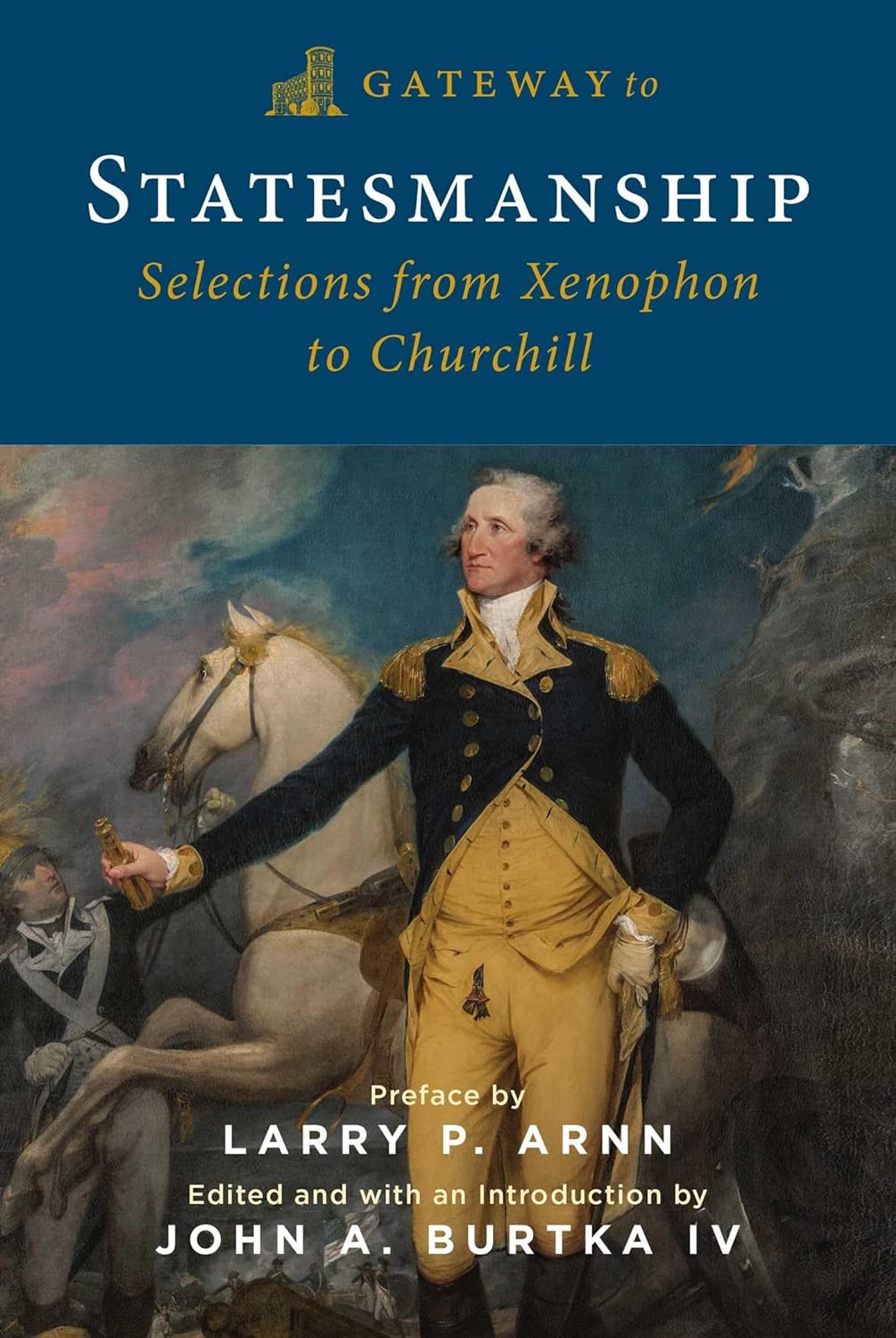This anthology is in the mirrors-for-princes genre: passages of paraenesis for rulers. In his substantial introduction, the editor, John A. Burtka IV, notes that these “self-help manuals” enabled “political leaders to examine their conduct and appearances.” Over the years, he says, these writings “have helped to inspire and instill courage, prudence, and charisma in countless leaders who have heeded their counsels.” These readings incorporate words of advice concerning, in particular, the virtues of command, especially practical wisdom. This book’s thesis is that the proffered counsel is not of historical interest only but retains the capacity to guide chief executives—and those responsible for choosing them—today.
The notion that these mirrors-for-princes are still worthwhile for leaders and for those aspiring to leadership in our own time is tied to the question of why this literary tradition died out in the first place. If these works played a necessary role, then why did they not carry into the present? By the same token, if in the past they were deemed deficient in vitality or utility, then what makes them attractive and valuable now?
Burtka offers two reasons for this genre’s demise. First, ruling monarchs passed from the scene, replaced by elected officials. Typically, the mirrors had been offered as gifts to kings and queens at their coronations. But, Burtka observes, “the mirrors-for-princes tradition” could still “become a ‘mirrors-for-presidents’ tradition, presented to elected leaders at the time of their inaugurations.” Second, schools today stress the present over the past, secondary sources over primary classics, and social sciences over ethics and theology. Again, this reason, Burtka points out, should not prohibit the use or hide the value of the traditional mirrors: they are “a universal phenomenon that spans all races, creeds, and geographic locations.” Their “message of justice, religious duty, and moral and vocational excellence has the power to inspire leaders who fight for the interests and well-being of all citizens, regardless of political party.” Thus, Burtka believes, if taken to heart and applied by leaders today, these manuals could help to restore confidence in elected officials at a time when Americans have largely lost faith in them.
This collection includes twenty selections from four historical periods. From ancient civilizations: Xenophon and Aristotle (Greece), Cicero (Rome), Kauţilya (India), Han Fei (China), and King David and the Book of Judith (Israel). From later antiquity and the medieval period: Eusebius (Caesarea), Augustine (Rome), Agapetus the Deacon (Constantinople), Abu Nasr Muhammad al-Farabi (Syria), Thomas Aquinas (Italy), and Christine de Pizan (France). From the Renaissance: Machiavelli (Italy), Erasmus (Netherlands), and Thomas More (England). And from the modern period: George Washington and Theodore Roosevelt (United States), Winston Churchill (United Kingdom), and Charles de Gaulle (France).
Some of the texts in this volume provide advice indirectly—by indicating to readers what to avoid. These extracts hold interest because, to borrow a phrase from Old Testament scholarship, as “anti-wisdom wisdom literature” they challenge the dominant strain of advice-giving. Burtka cautions his readers that “not every admonition in this book is worthy of imitation.” But “discerning readers” will nonetheless benefit by becoming acquainted with “the tactics and treachery that will be used against them if they aspire to positions of leadership in the real world.”
In the past three decades, many books on ethics and leadership have been published. Undergraduate courses in this subject are widespread, both in liberal-arts programs and in professional schools of business and education. Whole schools of leadership studies exist at several prominent universities, offering degrees at both the undergraduate and the postgraduate levels. Even doctoral degrees are offered in leadership; all such programs require at least one course in leadership ethics.
Invariably, these courses focus on the moral traits of outstanding leaders. Within this popular subject, all the recommended and required texts—aimed at inculcating virtues of leadership—face a similar challenge, a high methodological hurdle, which is this: can the virtues be taught in such a way that they become habits of the heart, settled dispositions, within each practitioner of leadership? And the related, larger question is this: how do human beings become virtuous, whether they are generals or mothers or students or teachers or husbands or ordinary citizens?
Essentially, all the books in the ethics and leadership genre beg the question of whether virtue can be taught. For example, in his introduction, Burtka cites as evidence of the “enduring relevance” of teaching virtue the case of Xenophon’s Education of Cyrus, written in about 370 BC. Cyrus was a notably successful ruler. Xenophon says that knowledge can prevent bad leadership; knowledge of good leadership can solve the problem of bad leadership.
But is Xenophon right? Can virtue be taught? It is not a question susceptible of an easy or a simple answer. Because virtue has more to do with the formation of good habits over time than with “knowledge” that is poured into the reader, the conservative thinker Russell Kirk spoke for many when he asserted that virtue cannot be imparted directly but outstanding literature can play a role in shaping persons into virtuous selves. Other analysts of this problem disagree: even the finest literature cannot produce lasting commitment in stubborn hearts.
One quality of conservatives has been not simply that they have been suspicious of theory but, more broadly and positively, that they have recognized the significance of persons as psychosomatic unities of thought, feeling, will, and action. Although he gained much from the reflections of such figures as Marcus Tullius Cicero, Kirk recognized that, in the formation of individual men and women, the path to a rightly ordered soul (and thence to a healthy commonwealth) more often runs through narrative than through abstraction. To become sticky, precepts must ally with examples, principles with stories, virtues with exemplars.
Gateway to Statesmanship shares this recognition in part, but too much of the story and context remains hidden in the fifty-page introduction. A better approach would be to outline the main issues—open up the questions for students to consider—in a shorter introduction and then acquaint readers with biography, historical context, and leading themes in table-setting remarks featured in headnotes before each extract (similar to what Jerry Z. Muller does in his anthology Conservatism, published in 1997). This approach would stimulate readers’ curiosity and give them lively questions to grapple with as they begin each selection. Otherwise, even conscientious, attentive readers will lose track of the welter of detail supplied in the introduction by the time they get to the related material deeper into the text.
The market for this book—besides future U.S. presidents—is clearly high-school students and beginning undergraduates, for the editor takes care in his introduction to assume no prior knowledge and to explain, for example, that the Renaissance was followed by the Reformation, the Enlightenment, and the Industrial Revolution. My experience over forty years tells me that, by and large, these students are not paragons of patience. A good instructor will teach the questions. An editor will help students and teachers by carefully framing each selection. For example, before George Washington’s Farewell Address: What are the salient issues surrounding political parties and international alliances? What are the pros and cons of parties and alliances? How, if at all, is Washington’s stance pertinent today?
A danger of presenting selections as words of enduring wisdom likely to influence high officials for the better is that this approach undermines a potentially useful skepticism that should attach to political texts. For example, an anthology that offered Sir Robert Peel’s Tamworth Manifesto (1834) by itself, or with minimal context, would lead today’s readers to take it at face value as, in the words of its author, a “frank and explicit declaration of principle,” rather than, as Boyd Hilton describes it in A Mad, Bad, and Dangerous People? (2006), a document whose “significance was not substantive but political.”
A hermeneutic of suspicion—still well short of cynicism—should be cultivated in the young, perhaps especially in relation to “mirrors-for-princes,” for, human nature being what it is, rulers, even democratically elected officials, have been known to gaze into mirrors not to make necessary adjustments but only to admire their own reflections. Without a measure of realistic skepticism, how will students know how to appraise two of the documents in this anthology, the effusions of Theodore Roosevelt and Charles de Gaulle, statements which just happen to glorify the traits of their own proud selves and scorn the contributions of lesser mortals?
The mirrors-for-princes theme may be too restrictive, turning it into a conceit that hamstrings an editor. Instead of only twenty selections over 250 pages, a revised edition might include fifty passages from a wider selection of authors and discard the mirrors-for-princes genre as too limiting. Its costs outweigh its benefits, and it breaks down by the twentieth century anyway. Shorter extracts would eliminate some of the longueurs in many of these texts and carry the reader more quickly to the key points.
But perhaps the main problem with such an anthology as this one is the nature of the advice given: too bland and predictable to enable the reader to gain much traction. Rulers are enjoined to be kind and courageous, risk danger, be friends of truth, refrain from anger, be pious, be approachable to those in need, display paternal love, be honest, love justice, and avoid spending too much money.
An ordination sermon preached directly to an ordinand standing in front of the congregation and the bishop will have an effect; it will pierce to the heart and likely be remembered—by the individual who is ordained. Read fifty years later by someone not even of that denomination, the same words of inspiration and guidance will probably fall flat. A word, even a trite phrase, spoken at the right moment may be the one thing needful. So undoubtedly it was in the cases of many of these rulers. But general precepts and moral exhortations, largely devoid of context and immediacy, are not the best way to engage young people today.
Even in the political realm, we know that leaders must make their way—as my dissertation supervisor Professor Kenneth W. Thompson often proclaimed—in a maze of competing principles through a fog of imponderables. In international relations theory, for example, attractive principles, including counsels to exercise prudence, are enunciated by various schools: liberal internationalism, realism, conservative internationalism, classical-liberal foreign policy, and so forth. But then, in the final analysis, what exactly do we do in relation to Ukraine, Israel and Gaza, and Taiwan?
In this collection, the ambiguities of this genre are displayed by Xenophon himself. Knowing that he was dying, Cyrus summoned his sons and his friends to give them his final “instructions about my kingdom.” But the sound knowledge he imparted to them proved unavailing, for, as Xenophon tells us, “no sooner was he dead than his sons were at strife, cities and nations revolted, and all things began to decay.” Words of practical wisdom are a start, but much more is needed, as no doubt the editor of this collection would agree.















